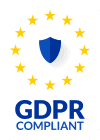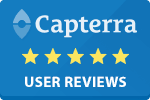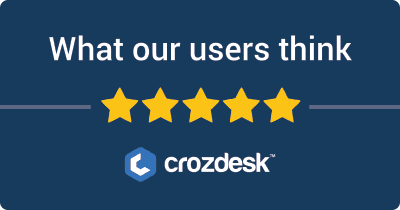
Introduction: Kompyte vs. Similarweb in Competitor Analysis Tools
Kompyte and Similarweb are two prominent tools designed to assist businesses in competitor analysis. Both platforms aim to provide valuable insights that help organizations understand market dynamics, assess competitive positioning, and enhance marketing strategies.
Users often consider these tools for their ability to gather and analyze data on competitors’ digital activities, including website traffic, keyword strategies, and content performance.
Comparison Aspects:
- Features: Evaluate the range of analytical tools, data sources, and reporting capabilities offered by each platform.
- Pricing: Analyze the cost structures and subscription options to determine affordability.
- Ease of Use: Assess the user interface and learning curve associated with each tool to gauge user-friendliness.
This comparison will assist users in making informed decisions based on their specific needs and budget.
Kompyte VS Similarweb: Which tool is the most popular?
| Tool | Number of Reviews | Average Rating | Positive Reviews | Neutral Reviews | Negative Reviews |
|---|---|---|---|---|---|
| Kompyte | 8 | 4.44 | 8 | 0 | 0 |
| Similarweb | 34 | 2.38 | 12 | 1 | 21 |
Kompyte is the most popular tool based on average user ratings, achieving a score of 4.44 from 8 reviews, all of which are positive. Conversely, Similarweb, despite having a higher total number of reviews at 34, has the lowest average rating of 2.38, with a significant number of negative reviews (21 out of 34).


Kompyte and Similarweb: Quick Comparison Overview
| Feature/Aspect | Ahrefs | SEMrush |
|---|---|---|
| Primary Features | – Site Explorer – Keyword Explorer – Backlink Checker – Content Explorer – Rank Tracker |
– Keyword Research – Site Audit – Position Tracking – Content Analyzer – Marketing Insights |
| Target Audience | – SEO professionals – Digital marketers – Agencies focusing on content marketing and backlink analysis |
– Digital marketers – SEO experts – Content marketers – Social media marketers and PPC specialists |
| Main Advantages | – Robust backlink analysis – Comprehensive keyword data – Intuitive user interface – Constantly updated index |
– All-in-one digital marketing tool – Extensive competitor analysis – Wide array of tools for SEO and PPC – Integrated social media management |
| Core Value Proposition | Focused on providing in-depth SEO insights, particularly strengths in backlink profiles and organic keyword rankings. Ideal for users prioritizing content strategy and link-building efforts. | Offers a holistic view of digital marketing, making it easier to manage all aspects of online presence through an extensive range of tools for SEO, PPC, and social media marketing. |
| Ideal Use Cases | – Conducting comprehensive link audits – Developing effective content strategies – Tracking backlinks and organic rankings – Keyword planning for SEO campaigns |
– Managing and optimizing PPC campaigns – Conducting competitive analysis for market positioning – Comprehensive content analytics and SEO tracking – Social media metrics and management |
Most liked vs most disliked features of Kompyte and Similarweb
| Feature | Kompyte | Similarweb |
|---|---|---|
| Most Liked | – Ability to monitor competitors’ social media and blogs with engagement metrics | – Provides valuable insights and analytics for market position and competitor performance |
| – Before-and-after snapshots of competitor web pages for content and pricing assessments | – Seamless user experience; easy navigation and effective use | |
| – Compares user performance against competitors for SEO and paid ads | – Helpful and responsive customer support | |
| – Allows team separation for enhanced cross-departmental collaboration | – Positive remarks about the Chrome extension for convenience while using the service | |
| – High-quality customer service and onboarding for new users | – Essential tool for competitor analysis and monitoring in competitive markets | |
| Most Disliked | – Heavy reliance on user-provided keywords; lacks autonomous raw organic data | – Considered expensive by some users, impacting overall perceived value |
| – Ad tracking feature lacks depth compared to competitors | ||
| – Requires significant manual work; does not update automatically | ||
| – Overwhelming initial information; navigation challenges without guidance | ||
| – Some tools restricted to admin users only, limiting team access |
Key Features of Kompyte vs Similarweb
Here’s an overview of the key features of Kompyte and Similarweb as competitor analysis tools, along with their benefits to users and any unique aspects.
Kompyte
-
Real-Time Competitive Tracking
- Benefit: Users receive alerts and updates about competitor strategies, new product launches, or changes in marketing strategies in real time.
- Unique Aspect: This feature allows companies to react quickly to competitor moves and adjust their strategies accordingly.
-
Automated Insights
- Benefit: Kompyte automatically collects data from various sources and generates insights, reducing the time spent on manual research.
- Unique Aspect: The platform leverages artificial intelligence to highlight critical shifts in competitors’ activities, making it more proactive than reactive.
-
Market Landscape Creation
- Benefit: Users can visualize and analyze the competitive landscape, helping them identify gaps in the market and potential opportunities.
- Unique Aspect: The ability to create customizable landscapes tailored to specific needs helps in understanding the broader context of competition.
-
Content and Social Media Monitoring
- Benefit: Monitoring competitor content and social media provides insights into audience engagement and trends.
- Unique Aspect: Kompyte tracks messaging and positioning, offering insight into how competitors engage with potential customers.
-
Feature Comparisons
- Benefit: Users can compare their offerings against their competitors to identify strengths and weaknesses.
- Unique Aspect: This comparative analysis tool directly highlights important attributes and features that matter to buyers, making adjustment strategies clearer.
-
Customizable Dashboards
- Benefit: Users can create dashboards tailored to specific metrics that matter most to their business goals.
- Unique Aspect: The user-friendly interface supports visual data representations, making analysis accessible to non-technical users.
Similarweb
-
Traffic Overview and Analytics
- Benefit: Users receive detailed insights into website traffic, including sources, referrals, and audience demographics.
- Unique Aspect: Similarweb provides unique insights into user behavior and engagement, including time spent on site and bounce rates.
-
Industry and Market Insights
- Benefit: Users can analyze industry sectors, helping them to benchmark their performance against competitors.
- Unique Aspect: Similarweb’s industry analysis is extensive, leveraging a vast database to provide competitive insights across various sectors.
-
Keyword Research and SEO Analysis
- Benefit: Users can discover keywords that drive traffic to competitors’ sites, aiding in their own SEO strategy.
- Unique Aspect: The keyword analysis is robust, combining paid and organic data, offering a holistic view of a competitor’s search marketing strategies.
-
App Analysis
- Benefit: Similarweb tracks app performance metrics and user engagement, assisting companies with mobile strategies.
- Unique Aspect: The ability to analyze app-level performance alongside web performance provides a comprehensive view of digital competition.
-
Leads and Referrals
- Benefit: Users can understand where a competitor’s traffic originates, helping to refine their own marketing and outreach efforts.
- Unique Aspect: The depth of referral traffic analysis allows businesses to tap into effective channels that competitors are successfully leveraging.
-
Competitor Comparison
- Benefit: Users can directly compare their performance metrics with specific competitors, identifying areas for improvement.
- Unique Aspect: Similarweb allows for multi-competitor comparisons on key metrics, making strategic decisions more data-driven.
Summary
Both Kompyte and Similarweb serve crucial roles in competitor analysis, but they focus on different strengths. Kompyte is standout for its real-time tracking and automated insights, making it highly agile for businesses needing timely data. Similarly, Similarweb excels at providing detailed traffic and market insights, especially valuable for digital strategies. Ultimately, the choice between them can depend on whether a user prioritizes real-time competitive intelligence or broader digital analytics and industry insights.
Kompyte vs Similarweb Pricing Comparison
| Feature/Brand | Kompyte Pricing Tier | Similarweb Pricing Tier |
|---|---|---|
| Monthly Subscription Price | Starts at $199/month (Basic) | Starts at $249/month (Pro) |
| Annual Subscription Price | $1,888/year (Basic) — $158/month | Custom pricing (contact for details) |
| Free Trial | 14-day free trial available | No free trial offered |
| Main Offerings at Basic Tier | Real-time competitor tracking, unlimited users, basic analytics, alerts | Competitive research, traffic stats, basic insights, limited historical data |
| Main Offerings at Pro Tier | Advanced analytics, custom reports, enhanced data visualization, priority support | Detailed competitive insights, audience demographics, behavioral insights, access to historical data |
| Additional Features | Market intelligence, integration with tools like Slack | Advanced data filtering, API access, integration with other business tools |
| Custom Pricing Tier | Available but details unspecified | Custom tier available for advanced needs, pricing on request |
Notes:
- Kompyte focuses on real-time competitor insights and market intelligence, balancing affordability with core features.
- Similarweb provides a more comprehensive set of tools designed for in-depth competitive research and analysis but starts at a higher price point.
Support Options Comparison: Kompyte vs Similarweb
| Support Feature | Kompyte | Similarweb |
|---|---|---|
| Live Chat | Available on the website during business hours. | Not available. |
| Phone Support | Not offered. | Not offered. |
| Documentation | Comprehensive resources available, including FAQs and guides. | Extensive documentation covering various topics, including FAQs. |
| Webinars/Tutorials | Offers webinars and tutorials for user education. | Provides webinars and tutorials for deeper insights and guidance. |
Conclusion:
Both Kompyte and Similarweb offer robust documentation and educational resources such as webinars and tutorials. However, Kompyte provides live chat support, while Similarweb does not offer live chat or phone support, emphasizing reliance on self-service resources.
Unique Features of Kompyte Vs Similarweb
| Feature | Kompyte | Similarweb | Unique Value Proposition |
|---|---|---|---|
| Automated Competitive Tracking | Automated updates about competitors’ changes. | No specific automation for tracking competitor updates. | Kompyte’s automation allows businesses to stay informed about competitors without manual effort, saving time and improving response strategies. |
| Real-Time Alerts | Sends real-time alerts via email or Slack when competitors make significant changes. | Alerts are not as instantaneously integrated. | Real-time alerts lead to quicker adaptations to market dynamics and competitor strategies. |
| CRM Integration | Seamless integration with CRM systems like Salesforce for tracking leads. | Limited integration with CRMs for lead management. | This integration gives sales teams immediate access to competitive insights alongside lead data, enhancing targeting efforts. |
| Content Tracker | Monitors competitors’ content marketing initiatives, updates, and performance metrics. | Focuses more on traffic and engagement metrics without the in-depth content tracking. | The content tracker helps businesses understand and evaluate content strategies of competitors, allowing for better content planning. |
| Visual Content Analysis | Offers visual insights into competitors’ web and social media presence. | Primarily data-driven insights without extensive visual analysis. | Visual insights facilitate a more intuitive understanding of competitor strategies and appeal to marketers’ creative processes. |
| Competitor Product Comparison | Allows side-by-side comparison of product features and pricing. | Limited support for direct product feature comparisons. | This helps companies quickly identify gaps in their own offerings compared to their competitors. |
| Campaign Tracking | Ability to track specific campaigns run by competitors, including ad spends. | Focuses on general traffic and engagement metrics. | By tracking campaigns, companies can refine their marketing approaches based on real-time competitive strategies. |
| Market Research Insights | Offers in-depth market insights personalized for each user’s needs. | Provides generic market overviews. | Tailored insights help businesses make informed decisions that align closely with their unique market positioning. |
These unique features differentiate Kompyte and Similarweb from typical competitor analysis tools, providing businesses with valuable capabilities that support real-time decision-making, enhanced marketing strategies, and efficient resource management.


